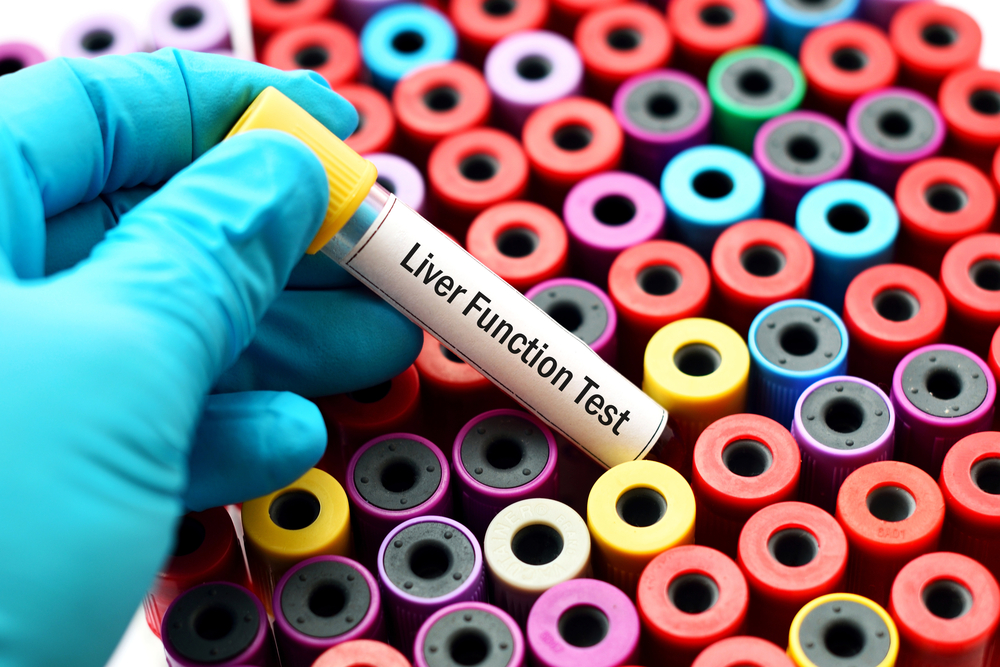Liver Function Tests (LFTs), also known as liver panels, are blood tests measuring the levels of certain enzymes, proteins, and products made by the liver. The levels of these substances correlate to how well the liver is carrying out its normal functions.
The liver is responsible for various important bodily functions (e.g., detoxification, digestion, synthesis, metabolism) [1]. Liver function tests can help detect liver problems. Read on to know more.
What is the Purpose of Liver Function Tests? [1 – 5]:
A liver panel can provide insight into a person’s general liver health and identify liver issues. It is also useful in the early detection of liver problems before symptoms become apparent.
LFTs are typically used for:
- Screening (e.g., hepatitis, routine health check-up, alcoholism)
- Diagnosis
- Monitoring and evaluation (e.g., disease progression, cirrhosis, previous abnormal liver panel, treatment response, potential medication-related adverse effects).
Different Types of Liver Function Tests
-
Albumin[2, 4 – 6]: Albumin is a protein synthesised by the liver.
- The amount of albumin present in the blood indicates how well it is being synthesised by the liver.
- Low levels of albumin often reflect liver or kidney issues, but can also be caused by malnutrition, malabsorption, infection, inflammation, or thyroid disease.
- High levels of albumin can be associated with dehydration or a protein-rich diet.
-
Total protein[2, 4, 5, 7]:
- The total amount of protein (e.g., albumin, antibodies) in the blood is measured.
- Low levels of protein often suggest a liver or kidney disorder. This may also be caused by malnutrition, malabsorption, lack of synthesis, or excessive protein loss.
- High levels of protein may be linked to dehydration, certain malignancies, or some forms of hepatitis.
-
ALP (Alkaline phosphatase) [2, 5, 8, 9]: A liver enzyme.
- Mostly found in the liver and bones.
- ALP may leak into the bloodstream when there is liver damage.
- Low concentrations of ALP may be associated with a genetic disorder, zinc deficiency, or malnutrition.
- Elevated ALP levels often imply the presence of liver disease, bone disorder, or bile duct blockage.
-
ALT (Alanine transaminase) [2, 5, 10, 11]: A liver enzyme.
- Found primarily in the liver.
- ALT is released into the bloodstream when liver cells are damaged and can help detect liver injury.
- Elevated levels of ALT could be a sign of a liver disorder.
-
AST (Aspartate aminotransferase) [2, 5, 12, 13]: A liver enzyme.
- Predominantly in the liver, heart, and skeletal muscles.
- AST escapes into the bloodstream when the liver is damaged and can be used to help identify the liver injury.
- Raised levels of AST might be an indication of liver problems, heart problems, or pancreatitis.
-
GGT (Gamma-glutamyl transferase) [2, 14, 15]: An enzyme produced by the liver.
- Found all over the body, but mostly within the liver.
- Spills into the bloodstream when liver cells are injured.
- High levels of GGT could mean liver disease, or bile duct issues (e.g. blockage). Often higher GGT levels indicate greater liver damage. Heart failure, alcohol, and the use of certain drugs are other possible reasons for increased GGT concentrations.
- Low GGT levels usually mean that it is unlikely for the person to have liver disease.
- A healthy liver can remove bilirubin from the body. However, when the liver is damaged, bilirubin leaks into the blood. Accumulation of bilirubin within the bloodstream causes jaundice.
- Elevated levels of bilirubin could reflect some liver disorder, bile blockage, or the destruction of too many red blood cells.
-
Lactate dehydrogenase (LDH) [2, 3, 18]: An enzyme that helps the body make energy.
- Found in most parts of the body, including the liver.
- LDH is released into the blood when cells have been damaged.
- Raised LDH levels could suggest liver damage. However, it can also be elevated in other disorders, so further testing would be required to pinpoint the exact location.
-
Prothrombin time (PT) [2, 19]: Prothrombin is a protein made by the liver and is involved in the process of blood clotting.
- PT measures the duration it takes for blood to start clotting.
- The liver loses its ability to make prothrombin in the presence of severe disease.
- Prolongation of PT could therefore be associated with liver disease. It can also be used to estimate the severity of the disease. Other bleeding disorders might also be responsible for an extended PT result.
These tests may be requested as standalone tests, but, more frequently, they are done in combination to allow for a more complete clinical assessment. Multiple tests can be done simultaneously using the same blood sample.
Finally, atypical liver panel results do not always mean that there is a liver or health issue [3].
Many factors can potentially affect LFTs and their interpretation (e.g. age, gender, diet, medication, supplements, pre-existing illnesses or conditions).
Hence, it is important that your doctor is informed of your medical history so that your results can be evaluated more precisely [10, 12].













